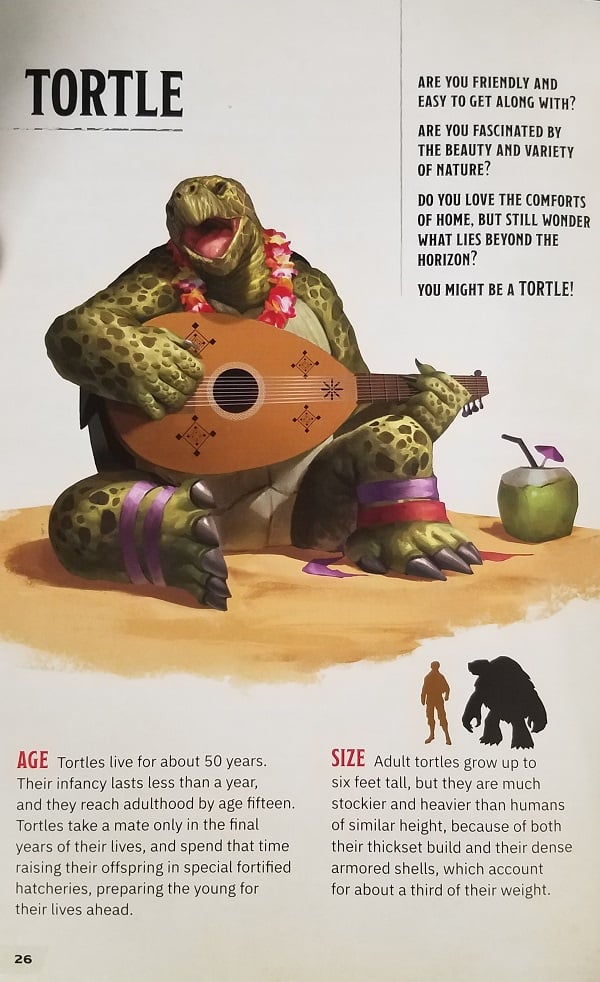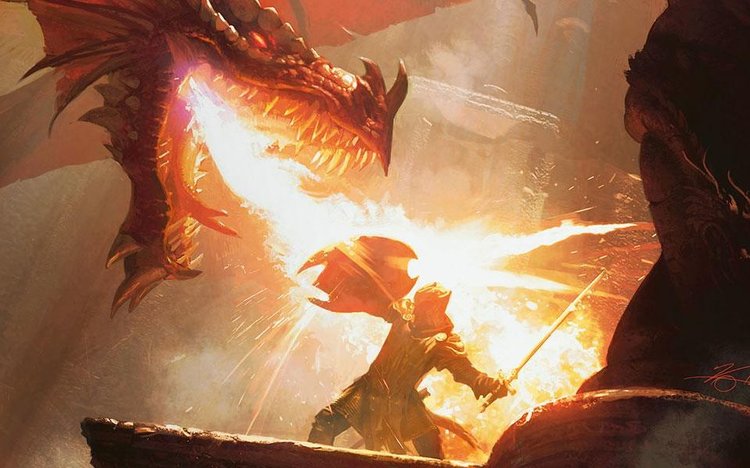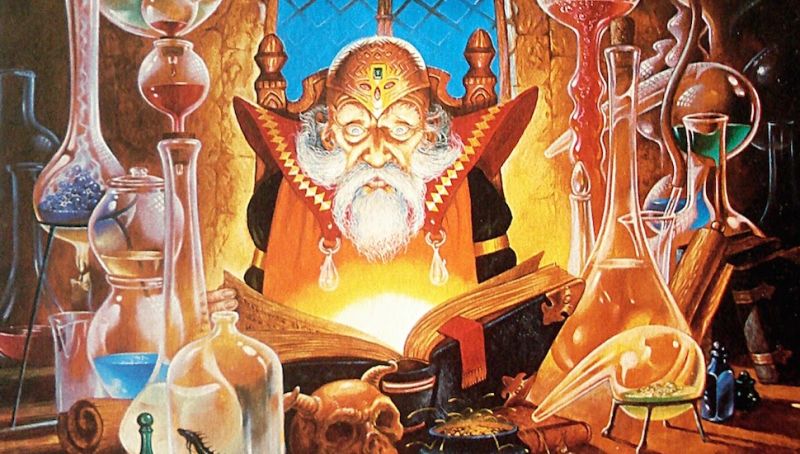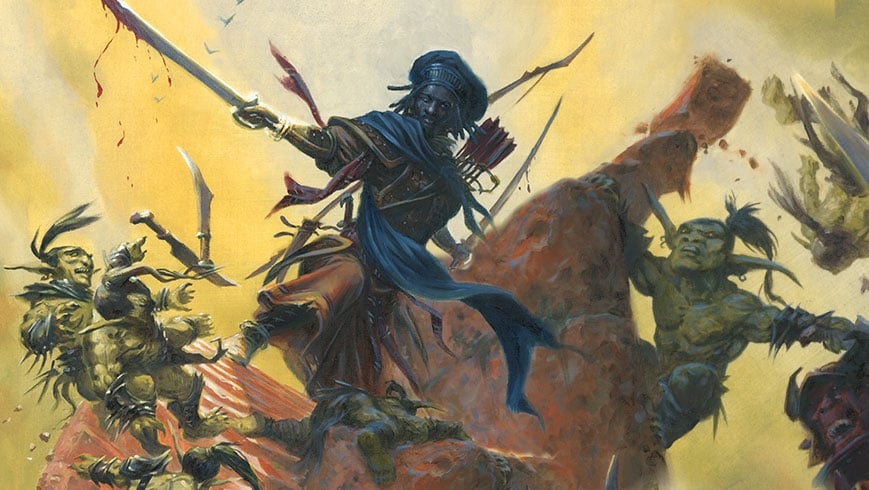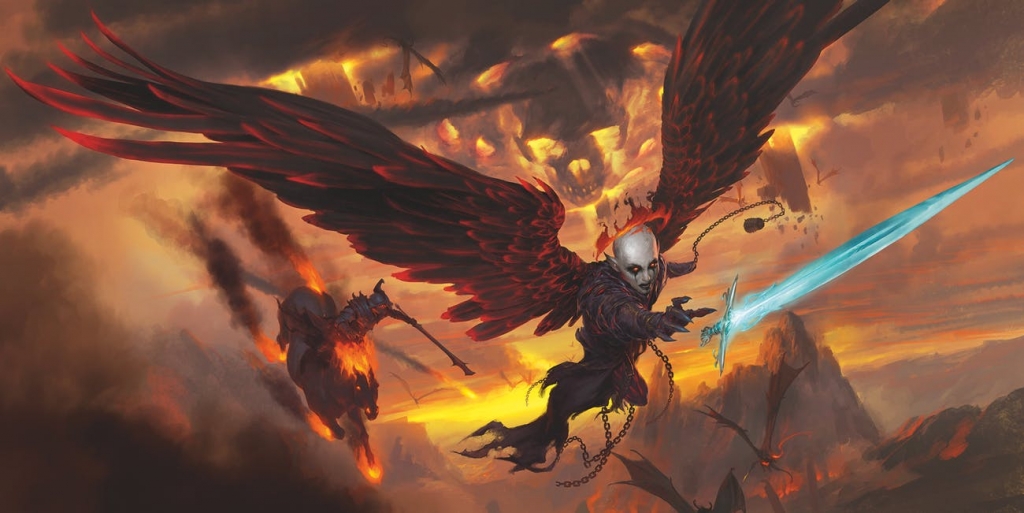D&D: Things I Learned Reading The Young Adventurer’s Guides
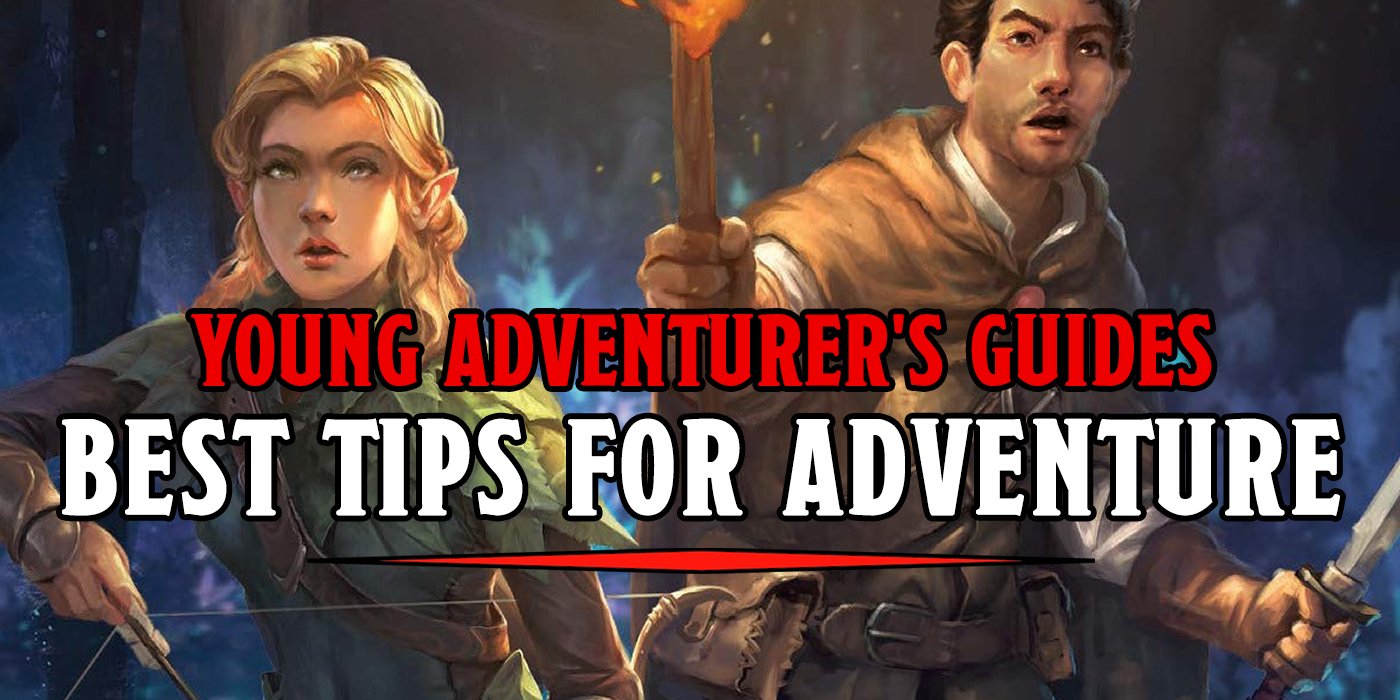
The Young Adventurer’s Guides have a lot to teach gamers, new and old, about playing D&D. Here are some of the lessons I learned reading them.
Weapons and Warriors and Monsters and Creatures are two of the best books you can find for getting into the world of D&D. They play up the themes and character of the world, all while boiling down complex or dry concepts into an much more lovely-to-digest read. And because they have the freedom of not being rulebooks, they get away with hiding all kinds of nuggets of adventuring wisdom. Here are a few lessons that I learned reading through Warriors and Weapons, the Young Adventurer’s guide to martial classes and equipment.
Think About How Your Character Relaxes
Whether talking about Tortles kicking back on the beach or Tabaxi, napping and purring in the sun, the Young Adventurer’s Guide isn’t afraid to show heroes kicking back out of combat. D&D can easily be all fighting all the time, but you can get a much better picture of who your character is if you think about what they like to do for fun. How do they unwind after a long day of questing?
You Don’t Have To Be A Bard To Inspire Courage
Everyone knows that magical musical instruments always go to the Bard, right? Well let me change your mind. Warriors and Weapons features an overview of each class, but then presents a “legendary” version, representing a more famous or iconic version of the character. Fighters get Bruenor Battlehammer, of Drizz’t and friends fame, for instance.
Well the Legendary Paladin, a Dragonborn paladin named Redclay, is famed for her magic drum that boosts the morale of her friends, making them ready for battle. And whether you interpret this as the character having an actual magic drum that grants immunity to fear and resistance to mind control, or as just a way of explaining the auras that exude from all Paladins, it’s still amazing.
I love the idea of a Paladin not just emanating an aura all the time because of how holy they are. Instead it’s a rousing cry here, a quick clutching of wrists there. What other “passive” abilities can you flavor as being things your character does before/during a fight?
Anyone Can Be A Good Warrior
Backgrounds are an important part of D&D. They are easily one of the most underrated systems out there–most players will use them to make sure they get whatever skills their character should have access to, but Warriors and Weapons takes a while to talk about how each of the backgrounds can be used to fuel your character. Why would a Sage go off to battle? What makes an Entertainer a warrior? Where your background separates from your class is such a fertile ground for storytelling.
Dressing For Success
Clothes might make the adventurer, but how many of you go out dressed in “noble clothes” without knowing what that means exactly? What kind of clothes does a Paladin like to wear, when not in armor? What about a Barbarian? Warriors and Weapons has these answers, and will give you all sorts of ideas about how to dress your very best.
What To Pack
Kits are an easy way to spend a few gold and get a lot of items. But can you tell the difference between a Dungeoneer’s Pack and an Explorer’s Pack? I can, thanks to this guide. There are a few other packs included in here–things like a Vampire Hunter’s Pack which contains holy symbols, holy water, and stakes for taking down filthy draculas.
Talk About Your Feelings
Probably the best advice in the book, though, comes at the end of the book. These Guides emphasize over and over that you are using your characters to tell a story. It gives some great examples of how to use character creation details to get your story started before you even roll dice, but when it gets to a list of questions they drop this on you:
What should someone feel as they experience your story?
That is such an important question, and one that is addressed in the Dungeon Master’s Guide, aka the most underrated book in D&D–but this one turns it on players, and I think one of the biggest lessons I’m taking away from this is that everyone at the table should be thinking about how they want the others to feel from the adventure.
Want to learn more about the Young Adventurer’s Guides? Here’s our overview video:
Check out the Young Adventurer’s Guides today–and Happy Adventuring!

